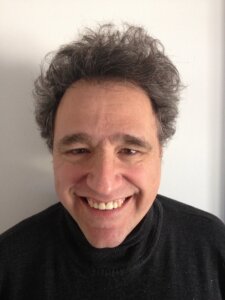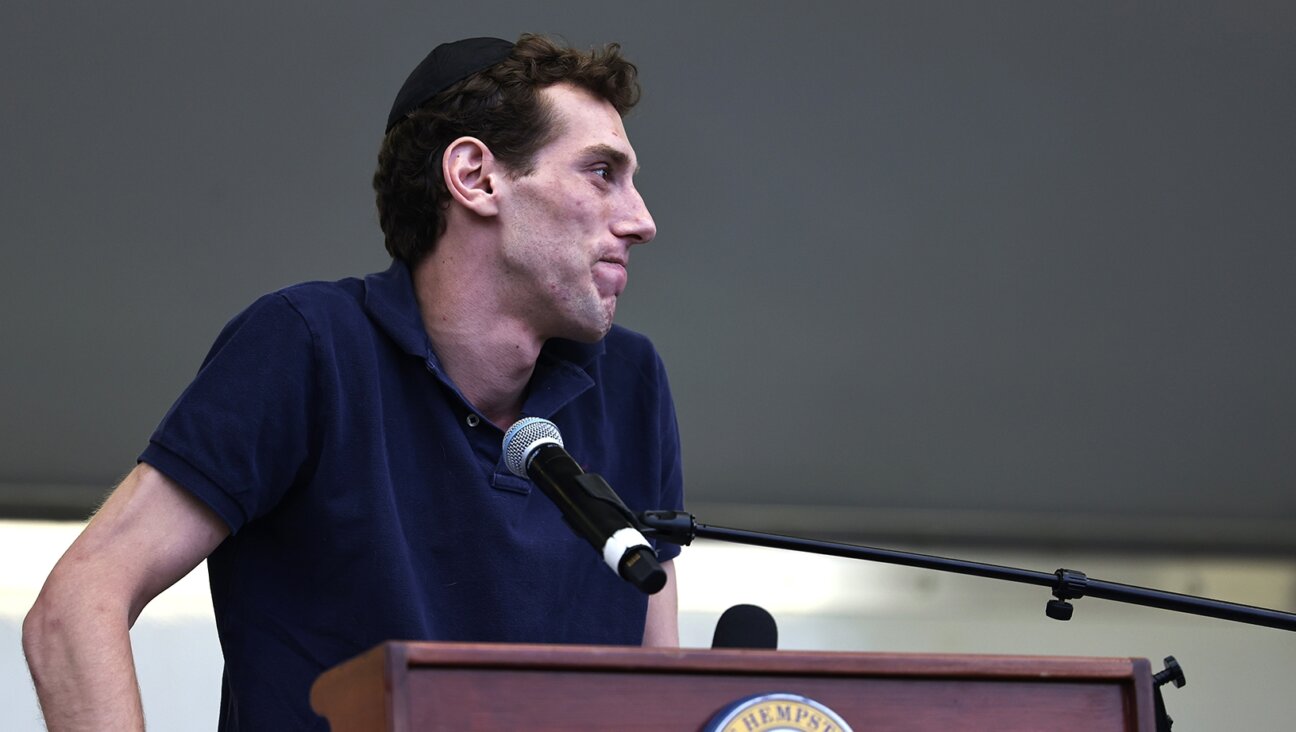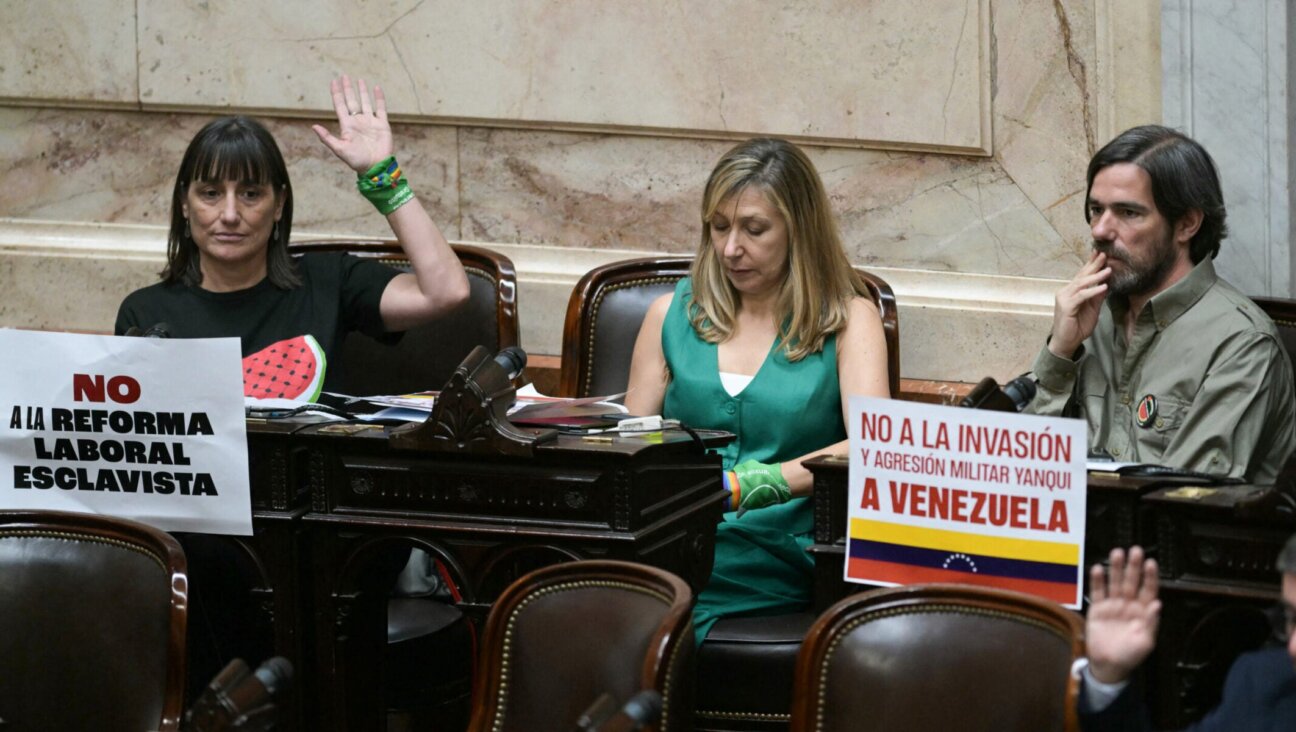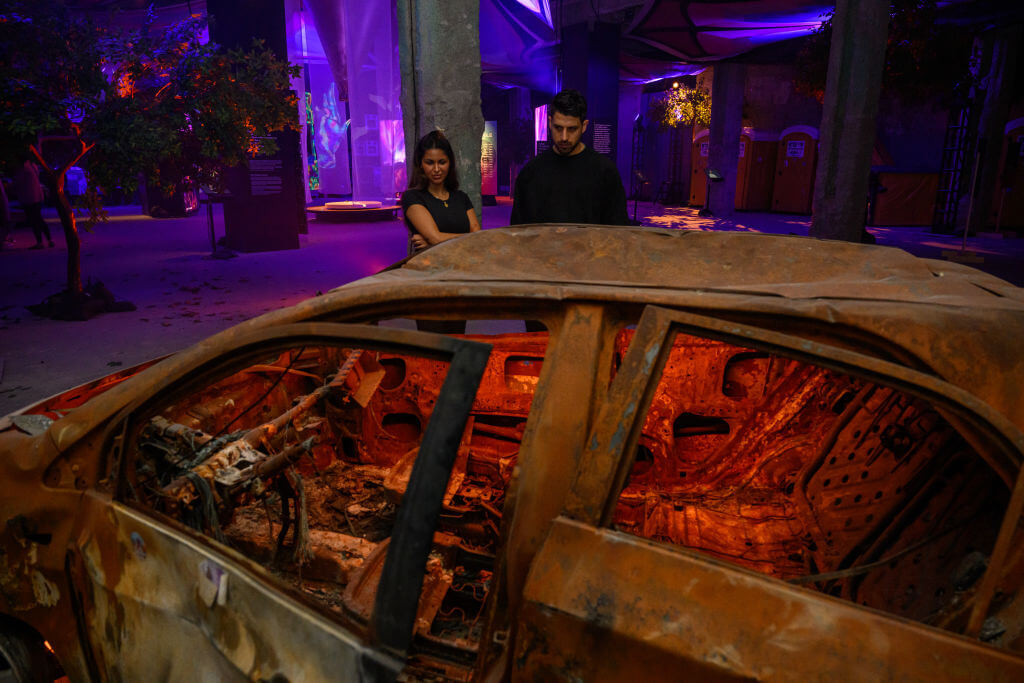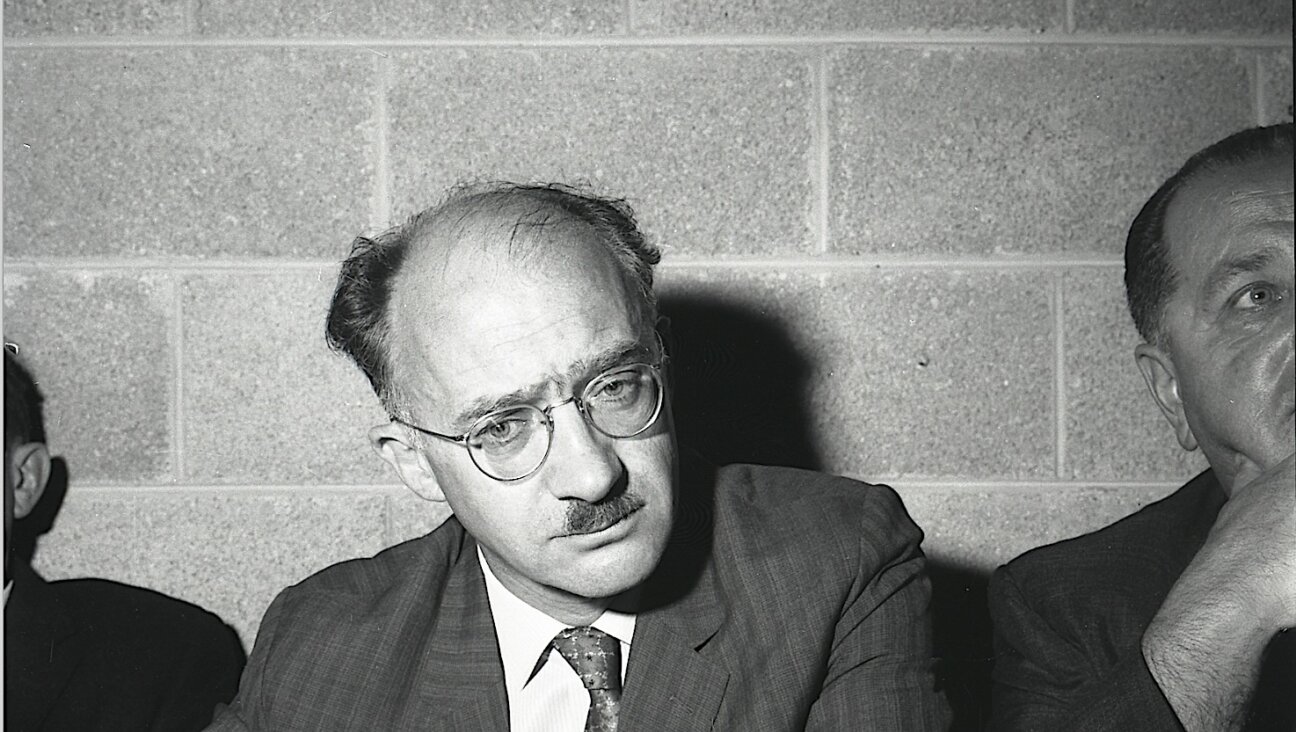At Holocaust Museum, a Virtual Encounter With Syrian Refugee

Graphic by Angelie Zaslavsky
WASHINGTON (JTA) – He’d rather talk to young women than answer my insistent line of questioning. He speaks in terms that make me feel like a Luddite, and when I bring up stuff he’d rather not talk about, out comes the smartphone.
Omar, a Syrian refugee passing time in a Berlin cafe, is not much older than my teenage son — and his mannerisms and conversational strategies make me feel, well, like a dad.
But he has seen enough grief to pack into several lifetimes, and the difference between Omar and the millennials and teenagers wandering through the U.S. Holocaust Museum in Washington, D.C., on a recent Wednesday becomes evident when I ask him what was the best thing that happened to him this week.
“Nothing,” he answers, immediately. “Like, the news is coming always, too … I mean the last two weeks is really crazy, my aunt has died, there was an attack in Berlin, my friend had to go to the army, we don’t have water in Syria, we don’t have electricity but we have to say ‘thanks God’ because it just happens, we can do nothing.”
Omar — he only wants his first name used — appears to be in his late 20s. He’s participating in an exhibition at the museum, “Genocide: The Threat Continues,” and we’re conversing, face to face, via video chat. I’m in D.C. and he’s at the cafe in Germany’s capital.
Once a visitor traverses an exhibit covering genocides recent (Yugoslavia, Cambodia) and current (Syria), you reach the “portal.” It’s designed to look like a shipping container, replicating the makeshift shelters that have been built for refugees in Jordan and Kurdistan. Inside is a large video screen that allows you to see and chat with a refugee in real time.
The museum’s Simon-Skjodt Center for the Prevention of Genocide describes the exhibit as part of its mission “to bring attention to the people and places at risk today for genocide and other mass atrocities.”
(Visitors can make appointments using an online schedule, though many of the visitors are drop-ins.)
I didn’t notify the museum, wanting to replicate as best I could the experience of an average visitor, so Omar at his bustling café is matched with me at random. Berlin’s refugees are mostly from Syria. There are other portals in Kurdistan, where refugees from areas in Iraq controlled by the Islamic State interact with visitors, and in Amman, where there are refugees from the fighting in Aleppo.
Admittedly, my question, “What is the best thing that happened to you during the past week?” is a bit moronic. But in my feeble defense, it’s also on a list that the museum and the company operating the temporary exhibit, Shared Studios, provides visitors entering the portal.
My immediate sense is an oxymoron — I feel both disjointedness and intimacy. Omar is right across from me in his dark, welcoming eatery, but he isn’t. I pose in front of the screen for a selfie (he begrudgingly agrees, extracting from me a solemn pledge not to share it), and in the image he stands beside me, frowning, like a glittering ghost.
I want to know more about Omar’s aunt; I know from loved ones dying far across an ocean. But I can’t press too hard because I don’t know this young man, who sports a goatee, a green sweater and a green cap. He’s already wary because I’m a reporter — and wary, I think, because I’m a reporter for a Jewish news agency.
But these simple lines of questions, I later learn, are kind of the point.
Cameron Hudson, the director of the Simon-Skjodt Center for the Prevention of Genocide, says the idea is for the museum visitor to transition from informed to emotionally involved.
“Certainly, the experience that we’ve had is to help people tell the story of what they fled, and why they fled, and what the experience was back in Iraq and Syria, so the sense we can take away is common humanity,” Hudson says in an interview the day after my visit. “That’s not a bad thing. It’s to shine a light on the human dimension of these genocidal conflicts.”
However, my profession has thrown off Omar. As much as I want to pretend I’m an American casually acquainted with the genocides now underway, professional courtesies mean I have to start by explaining who I am, what I do and for whom I work. He shares information about how he got to Berlin and where his family lives, but he asks me not to repeat that information. He casts his eyes down for much of the talk.
Our conversation has moments when he conveys the frustration of interacting with someone who Just. Does. Not. Get. It. But I think this is a product of our age gap.
“What do you do like about Berlin?” I ask.
“Syrian food, friends, shisha,” or waterpipe smoking, he answers.
“When was the last time you had shisha? Today? Last week?”
“No,” he says — and it’s in that response, followed by a chuckle, that I detect the impatience of the young for a hopelessly clueless elder. Not sure why it’s ridiculous to ask, I move on.
Berlin has a growing Jewish population, so I ask if he’s met Jews. Yes, he says. A man who tutors him in computer code is Jewish and “even speaks Arabic.”
“We are the same, but we have different religions,” Omar says, adding quickly, “I mean Jewish people, not the Israeli people.” Perhaps registering whatever expression flickers across my face across this electronic void, he corrects himself again.
“Even that, I don’t have a problem with both,” he says.
Is he aware of Germany’s history with the Jews? Yes, and for the second time, his voice becomes emotional, and I feel like we’ve connected.
“We visited the history museum here in Berlin, it was really interesting and a shock at the same time. We cannot imagine how they kill people that easy, you know,” he says. “We saw the way they killed them, in rooms, they closed the door, they opened the gas.”
And then, just as sure as we connected, he drifts away. He starts examining his phone. He’s developing an app, he tells me.
It’s time for me to go. A young woman who has signed on recently as a docent for the museum enters. Omar seems more interested in her.
“Where in New York are you from?” he asks her. Maybe he’ll exchange Facebook info with her, as he did with the women who preceded me.
Hudson loses patience with me a day later when I describe the interaction with Omar about the Holocaust, in the polite way activists for social change tell those of us less focused to, well, focus.
“It’s about shining a light on these crimes that have been committed in Syria and Iraq, and the human face of genocide in the world today,” he explains. “It’s in the Holocaust museum, but my mandate is to work on genocide where it is occurring.”
That’s true. What’s also true is I’m a bit of a Luddite in late middle age who cannot help but be unsettled by the experiences of the young man who is missing his family, thinking of his aunt, who has been unsettled by the scope of the inhumanity that occurred both in his home country and on the soil beneath the hardwood floors of the cafe where he now sits chatting with strangers.
